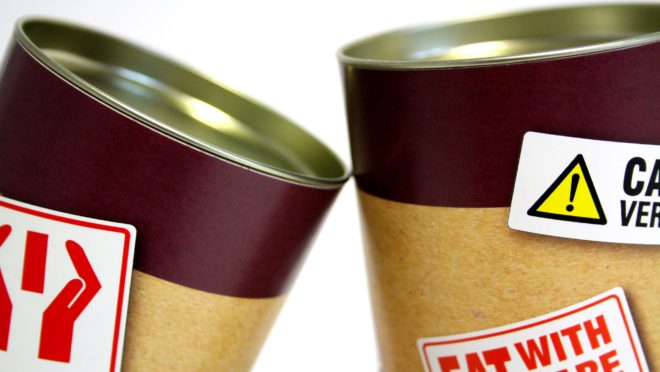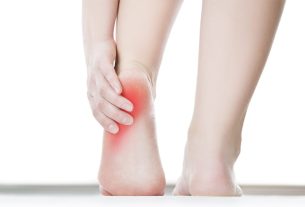Saber how to read food labels It has countless benefits, but the main one is finding products that are healthier for the body.
With this in mind, we created more content. It is part of a sequence of publications on labeling. If you missed any of them, just access the channel Taina Alimentos within Gazeta do Povo. Click here and immerse yourself in the world of natural products.
Learn how to read food labels correctly below.
3 reasons to pay attention to labels
Many people are not in the habit of reading the information on the labels of the products they buy. This makes the purchasing unhealthy items be facilitated.
Therefore, we have put together a list of reasons why looking at the labels is a very important task before putting the products in the cart.
Follow along.
Avoid unwanted ingredients
Whether for those who suffer from allergies or intolerances, read the food label will give you certainty that the substance that causes you any discomfort was not present in that composition.
See also | Food allergies: the cure formula is a mother’s love
Helps with Healthy Eating
If your goal is to consume healthier products, reading the food label will make you continue on this path.
Furthermore, checking the label will help you avoid certain substances that may not meet your healthy goals.
See also | Healthy Weight Loss: Functional Eating and Tips for a Natural Transformation
Conscious choice
Essential item for processed foods. If you choose to consume them, it is important to make conscious choices, that is, to fully understand what is being inserted into your body.
See also | Processed, ultra-processed or natural foods? Know the differences
Now that you have good reasons to start looking at food labels carefully, find out in the next topic how you should read them.
How to learn to read food labels?
Learning to read food labels is not complex at all. The first step is to understand the nutritional table.
As the objective of this content is not to delve deeper into this subject, we will talk about its items in a generic way. However, if you want to know more, just click here.
In summary, the main items on the nutritional table that deserve your attention are:
- Portion
- Calories
- Carbohydrates
- total sugars and added sugars
- Proteins
- Total fats (saturated, trans and unsaturated)
- Fibras
- Sodium
- Other nutrients
- Daily value
The next step is to pay attention to the values of each item. Nutritionists recommend the following values for a standard diet (2000 calories) for an adult:
- Carbohydrates: 300 g
- Proteins: 75 g
- Total Fat: 55 g
- Saturated Fats: 22 g
- Dietary Fiber: 25 g
- Sodium: 2000 to 2400 mg
- Sugars: 50 g
Knowing this, let’s go to the third and final step, which is the choosing the ideal products.
How to choose the right products?
By understanding the data from the nutritional table and knowing the ideal quantity of each item, we are able to outline how to choose the ideal products.
The table created by the Tua Saúde website masterfully summarizes the quantities you should look for in each product and possible variations in the name of these items. See below.
| Componentes | Recommended quantity | Other names for this component |
| Total fat | The product has a low amount of fat when it has up to 3 g per 100 g (in the case of solid products) and up to 1.5 g per 100 ml (in liquids). | Animal fat/oil, beef fat, butter, chocolate, milk solids, coconut, coconut oil, milk, cream, ghee, palm oil, vegetable shortening, margarine, tallow, cream. |
| Saturated fat | The product has a low amount of saturated fat when it has up to 1.5 g per 100 g (in the case of solids) or up to 0.75 g per 100 ml (in liquids) of the product. | |
| Trans fats | Foods containing trans fats should be avoided. | Partially hydrogenated fat, margarines, partially hydrogenated vegetable oil, hydrogenated oil, interesterified fat. |
| Sodium | The product has a low amount of sodium when it has less than 120 mg per 100 mg or 100 ml of the product. | Monosodium glutamate, MSG, sea salt, sodium ascorbate, sodium bicarbonate, sodium nitrate or nitrite, vegetable salt, yeast extract. |
| Sugars | Products that contain up to 0.5 g per 100 g or 100 ml of the product are considered “sugar-free”. | Dextrose, fructose, glucose, syrup, honey, sucrose, maltose, malt, lactose, brown sugar, corn syrup, high fructose corn syrup, fruit juice concentrate. |
| Fibras | A product with high amounts of fiber contains 6 g per 100 g or 3 g (in the case of solids) per 100 ml (in liquids) of the product. | |
| Calories | A low-calorie product contains up to 40 Kcal per 100 g (in the case of solids) and up to 20 calories per 100 ml (in liquids). | |
| Cholesterol | The product is low in cholesterol and contains up to 1.5 g per 100 g (in solids) and up to 0.75 per 100 ml (in liquids). |
And here’s one extra dica: Knowing how to read food labels is essential to purchasing reliable products. But, along this journey, it is also interesting to find natural product companies that preserve quality, without giving up health benefits.
An example of this is the Taina Alimentos. Specializing in natural products, Tainá delivers food options that preserve most of the original nutrients found in natural ingredients. All of this within the correct labeling standards, bringing even more transparency to the food it produces.
Furthermore, the brand is committed to food safety. Therefore, it ensures that it is free from cross-contamination, delivering healthy and reliable options to its consumers.
See also | Learn how to avoid cross-contamination and ensure safe food
When choosing products from Taina Alimentosyou not only strengthen your commitment to natural eating, but you put into practice a conscious choice for your long-term health.
Visit the brand’s website or look for it in natural product stores near you!

Sign up for our newsletter and stay up to date with exclusive news
that can transform your routine!
Warning: Undefined array key "title" in /home/storelat/public_html/wp-content/plugins/link-whisper-premium/templates/frontend/related-posts.php on line 12
Warning: Undefined array key "title_tag" in /home/storelat/public_html/wp-content/plugins/link-whisper-premium/templates/frontend/related-posts.php on line 13




